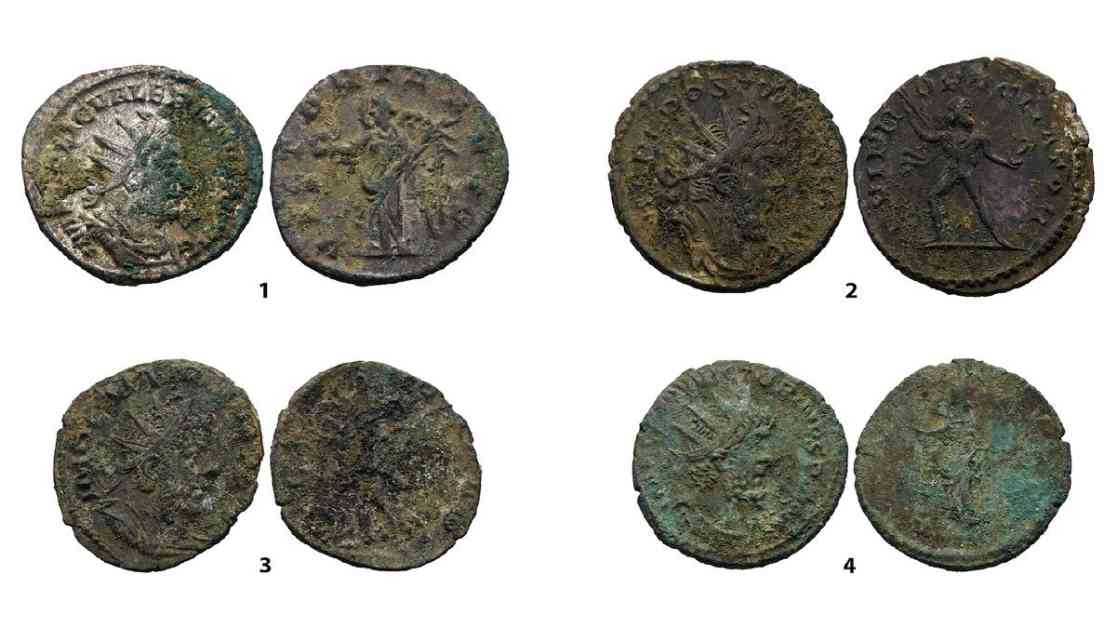A metal detectorist in Germany recently unearthed a rare hoard of almost 3,000 Roman-era coins in the Westerwald mountain range, far from any known settlements of the time. The discovery was made near the town of Herschbach, outside the ancient borders of the Roman Empire, sparking curiosity among experts.
The hoard, consisting mostly of Antoniniani coins from the 3rd century A.D., was found buried in a broken ceramic pot adorned with geometric designs. While the coins are in poor condition, with only 100 identified so far, they depict various Roman and Gallic emperors, as well as deities like Hercules and Mars.
The coins date back to between A.D. 241 and 243, up to A.D. 269 and 271, suggesting that the hoard was buried in the early 270s. What’s puzzling is that most of the coins were minted in Cologne, which was part of the Gallic Empire at the time, rather than in Rome. This raises questions about how the coins ended up in enemy territory, especially in an area with no known Germanic settlements.
Archaeologists are now working to analyze the silver fragments found with the hoard using CT scanning technology to reconstruct their original shape. They also plan to collaborate with other researchers to identify the remaining coins and unravel the mystery behind this fascinating discovery.
The find is particularly significant because large coin hoards from this period are rarely discovered outside the Roman Empire’s former lands. While theories abound about why the coins were buried in the Westerwald mountains, including possible bribes by the Gallic Empire to German elites, the exact reason remains elusive.
This discovery sheds new light on the complex political and economic interactions of the time, offering valuable insights into the ancient world beyond the borders of the Roman Empire. As archaeologists continue to study and analyze the hoard, more details are expected to emerge, providing a deeper understanding of this hidden treasure unearthed in the German mountains.










